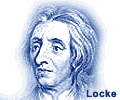Astrakhanskaya Oblast’:
Transformation of the Ethnic Structure
Zeletdinova E.A.,
Dr. Sci. (Pol. Sci.), Professor, Head of Department of Sociology and Psychology, Astrakhan State Technical University, zeletdinova@list.ru
DOI: 10.17976/jpps/2015.06.14
Zeletdinova E.A. Astrakhanskaya Oblast’: Transformation of the Ethnic Structure. – Polis. Political Studies. 2015. No. 6. P. 144-156. (In Russ.). https://doi.org/10.17976/jpps/2015.06.14
The processes of developing all-Russian and ethnical identity not only are closely related, theyalso depend on various reasons, one of the key of which is migration. Mass transmigrations can drastically change ethnic structure of population and form “threats” by means of competitive “strange ones”. Migrationprocesses can overcharge the problems of economical, social and cultural nature. They also may becomethe reason for escalation of interethnic tension. The possibility of such risks is higher in the regions withrelatively heterogeneous composition of population and proximity to the state borders. Astrakhan region canbe considered one of such areas. The article defines the character of changes in the regional ethnic structureover the past ten years, trends in building interethnic relations and identity issues. The author comes to theconclusion that traditional ethnic residents feel cautious in relation to migrant groups. The notion “migrants”is becoming the principle which distinguishes between “native” and “strange” ones. The “Strange” differfrom the hosting society with their social and cultural principles, norms of behavior, knowledge and skills.According to the results of the research, these criteria differ greatly among aboriginal peoples of Astrakhanregion (Russians, Tatars and Kazakhs) and peoples from Caucasus that came to this region. Such situationis prone to build ethnical boundaries. Serious problems may arise in adaptation of newly arriving immigrantsand reaction of hosting communities to them due to projected decrease in migration potential of Russiannationals. Hence the authorities will face a dilemma: either to improve demographical indicators at theexpense of migration, or to strive to retain ethnic and cultural (and confessional) balance. Herewith, oneshouldn’t neglect the following: the more intensive policy of improving demographic situation in the regionis conducted, the more rapid and complicated the processes of changing regional ethnic structure will be, as well as the more unpredictable transformation of grounds of regionalization and regional identity will be.
See also:
Smorgunov L.V.,
Political identity and the concept of the political. – Polis. Political Studies. 2012. No6
Zeveleva O.I.,
Migration policy and collective identity: the case of the russian-germans in Germany. – Polis. Political Studies. 2014. No6
Yankovskaya G.A.,
STRUGGLE FOR IDENTITY IN THE CONTEXT OF COMMUNICATIONS. – Polis. Political Studies. 2014. No4
Tkhagapsoyev Kh.G.,
In search of a new methodological paradigm in political science: the identity approach. – Polis. Political Studies. 2013. No4
De Vreede E.,
Culture, civilization and identity. – Polis. Political Studies. 2012. No5





.jpg)






 print
print
.jpg)
.jpg)